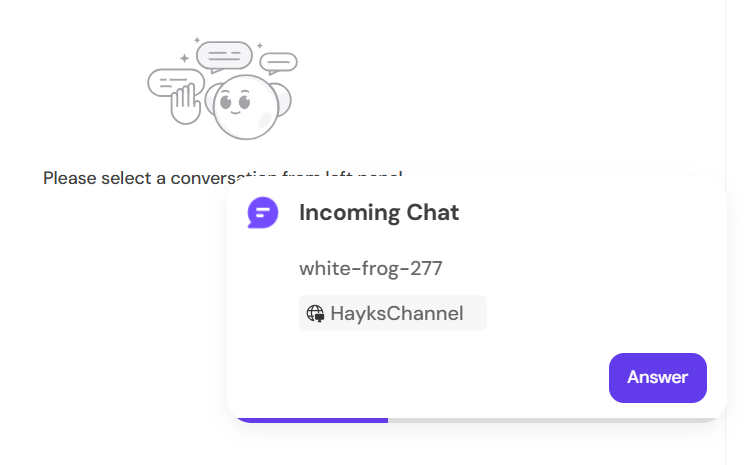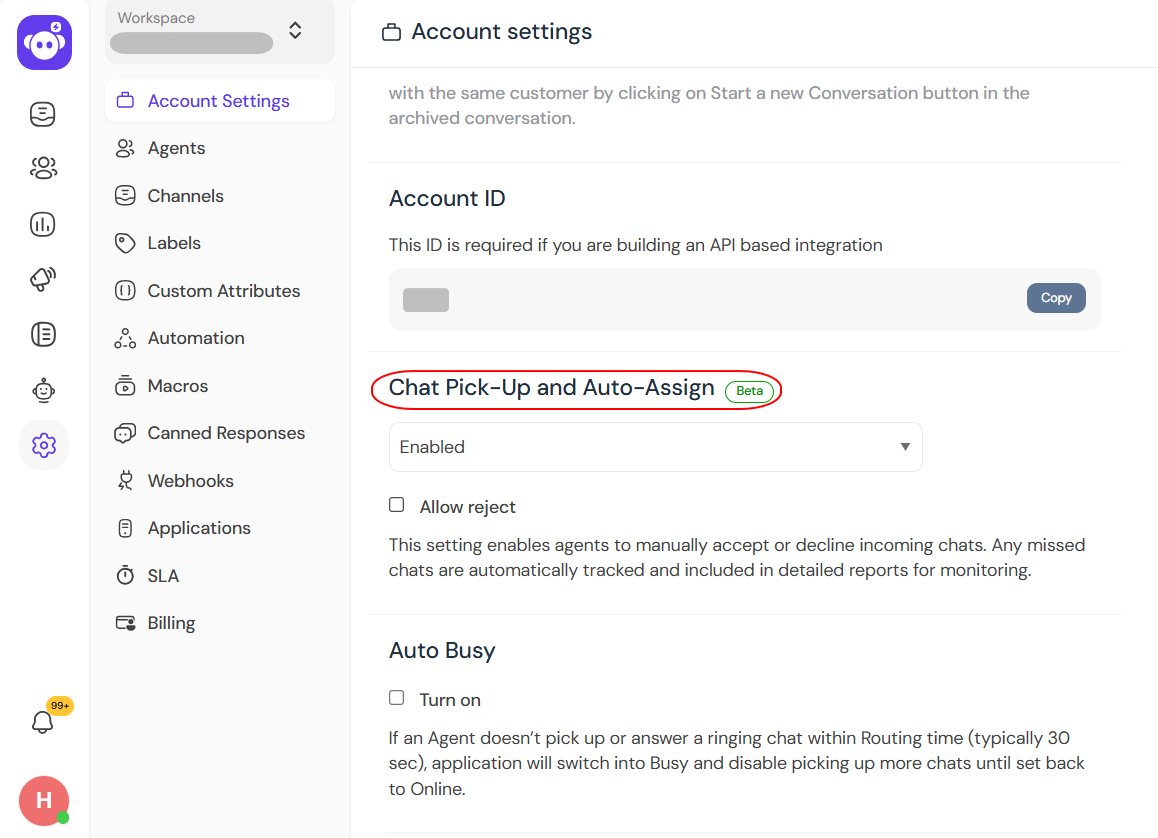Chat Pick-Up and Auto-Assign
The Chat Pick-Up and Auto-Assign functionality manages how incoming website chats are routed and assigned to support agents.

Instead of automatically distributing chats, the system presents each agent with the option to manually accept or reject incoming conversations, allowing for greater control over workload while maintaining fairness and efficient operations.

Chat Reception and Agent Notification Logic
When a new chat is initiated through a Website channel, the system generates a real-time pop-up notification in the agent interface. This prompt displays a title labeled “Incoming Chat,” including the channel’s name and the user’s name (or “Visitor X” for anonymous users).
Agents have the option to either accept or reject the chat, depending on whether the rejection functionality is enabled in the settings. The reject button is optional and controlled at the account level.
Only one incoming chat prompt is displayed at a time per agent. Once the current chat is responded to (either accepted or rejected) the next eligible chat appears.
If the agent does not respond within 30 seconds, the chat is automatically marked as missed. The system logs this event with a timestamp and the agent’s name. Similarly, if the agent rejects the chat, it is also marked as missed and logged in the same way. In both cases, the prompt disappears after the 30-second window or immediately upon rejection.
Auto Busy
Chat Handling Logic
Upon rejecting a chat, the agent status is set to Busy. This prevents them from receiving additional chat prompts until they manually switch their status back to Online. To support this behavior, an optional Auto Busy mode is available for Admin users. This setting, found at the bottom of Hoory AI Settings > Account Settings, automatically updates the agent's status to Busy after accepting a chat.
- If Auto Busy is disabled, agents who miss or reject a chat remain eligible to receive the next incoming chat prompt. However, if Auto Busy is enabled and the agent's status is already set to Busy, the system routes subsequent chats into the Queued state instead of prompting the agent.
Interaction Between Automation Rules and Chat Routing Logic
Automation rules interact with the chat routing logic in the following way:
-
The 'Assign-to-agent' rule overrides the Chat Pick-Up feature. In this case, Chat Pick-Up is disabled and does not function.
-
The Chat Pick-Up feature takes precedence over the 'Assign-to-Team' rule.
-
If both Chat Pick-Up and Assign-to-Team are enabled, chats are first routed to the team and then distributed to agents using Chat Pick-Up's round-robin logic.
Feature Constraints
Chat Pick-Up and Auto-Assign operate interdependently. Enabling the Chat Pick-Up setting alone is now enough; the Auto-Assign setting must also be active.
If Auto-Assign is turned off while Chat Pick-Up is on, the feature does not function and no chats are assigned unless it is done manually.
This logic applies only to chats initiated from Website channels. Conversations that are reopened at a later stage are not included in the Chat Pick-Up flow.
Reporting and Metrics
Hoory AI tracks Chat Pick-Up activity at both the agent and channel levels. For agents, the system records the number of missed conversations, average chat pick-up time. On the channel level, the same set of metrics is aggregated per channel to provide insight into overall responsiveness and routing performance.
These reports are structured to support performance evaluations, identify bottlenecks, and refine queue distribution rules as needed.